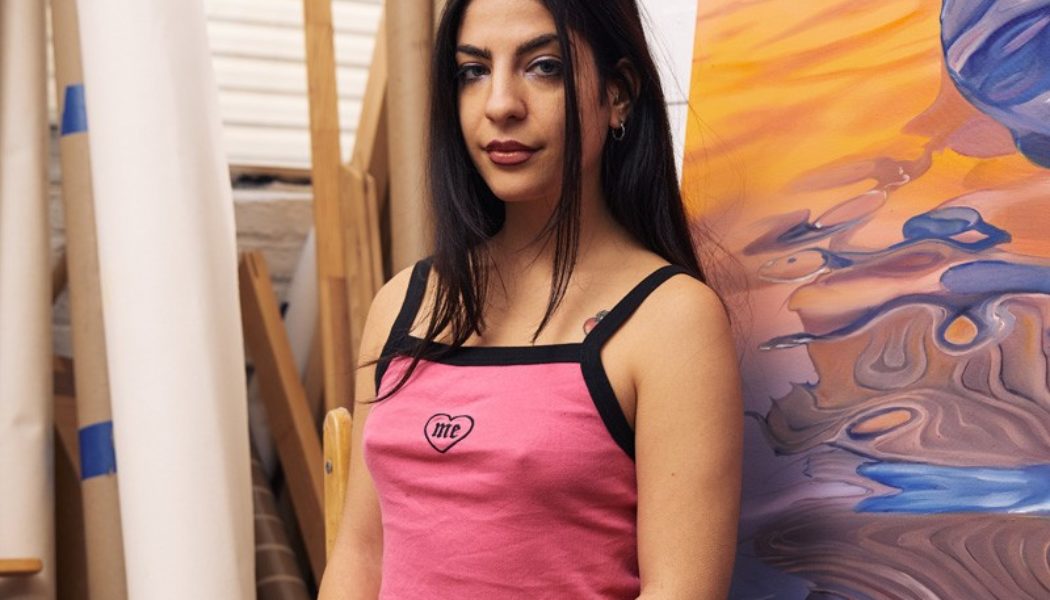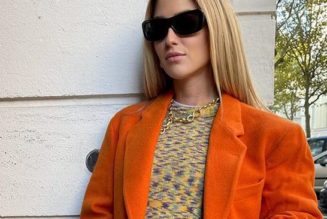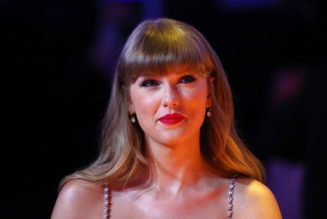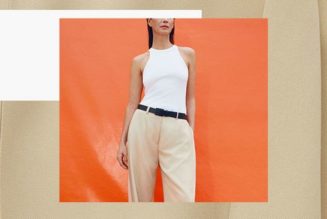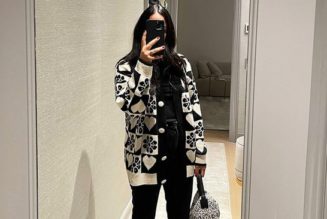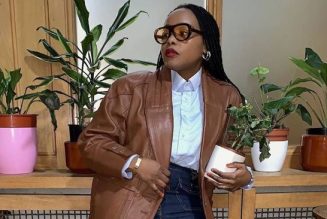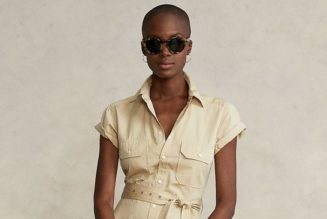A step into artist Emma Stern‘s studio in Brooklyn transports you into a colorful space that’s not too far from the gradient, fantastical worlds that she captures through painting. While Stern is known for portraying virtual realms and video game-esque characters in her work, a close-up look reveals the details of her brush strokes, rendering these objects with software then manipulating them with traditional oil painting techniques to achieve a singular, otherworldly feel.
Stern’s work is notable not just for her mixed technique, but also the message behind the female characters and typically pink environments she creates, offering visual commentary on topics such as femininity in the digital space and misogyny in virtually-rooted industries. Impressively, in the last two years, she has opened solo exhibitions with provocative titles like, “Boy, It Feels Good To Be A Cowgirl” in Paris, “Revenge Body” in London and “Slow Fade” in Los Angeles. Standing in front of her paintings, which often stand taller than the artist, is a stunning experience. A micro inspection is equally remarkable, showing off a nuanced application of paint with seamless gradients and incredible detail.
In celebration of Emma’s recent solo show, “Booty!” at Half Gallery, HYPEBEAST was invited into Stern’s space for Studio Visit about how she paints her perfectly rendered characters, the realities of running an artist’s studio, and how materials, software programs, and most importantly, time, are all factors in her creative output.
HYPEBEAST: Your work includes multi-faceted visual elements. Can you recommend where someone should start when viewing your paintings?
Emma Stern: I like when people start far away and then move in closer, because I think the painterly details come forth more the closer you get. You can see it twice: You see it from far away and then you can see it up close.
Do the colors or accessories on your characters reveal anything about them?
I’m interested in the fashion part of it. It’s kind of like playing with dolls when I design these characters. So, dressing them up and giving them accessories is a big part of it. It reveals a lot about the personalities of these characters and I spend a lot of time thinking about that. They all have names. They don’t always start out with names, but they come to me as I’m working.
Can you tell us about digital tools and training you use to create your paintings?
I’ve been painting for 15 years, and the technology part of it is more recent. It’s totally self-taught through YouTube tutorials and I have some friends who are industrial designers and they use 3D tools.
I like the dialogue that develops in between the very “traditional” media when juxtaposed against a very contemporary way of making things.
And how is using digital tools different than using traditional art supplies?
I use both. I like the dialogue that develops in between the very “traditional” media when juxtaposed against a very contemporary way of making things. I’ve definitely leaned into the technology portion of it. Instead of doing sketches on paper, I do sketches on my computer. I don’t know if it really saves me any time, but it definitely informs the visual language a lot.
Tell us about a typical workday in your studio. For example, how much time do you spend with digital materials versus painting or studio upkeep?
It goes in phases. Especially when I’m creating for a specific show, which is what I’m doing now, and preparing for my solo show in New York City that’ll happen in February of next year. For that, I conceptualized the entire thing digitally. I spend like a month and a half just creating the images with software. Then, I transition into the painting part of it, which comes much easier to me. It’s much more natural because I’ve been doing it for so much longer. It’s really my first language. The technologies, the part that is the most fun, is where I’m learning on the job a lot more.
It’s very much like one month on the computer and one with the paintbrush. It’s a lot of back and forth and using similar parts of my brain, but I use my body a lot more when I’m painting, given the scale of it. The figures I’m painting are all life-size or sometimes even slightly larger. I’m interacting with a figure that is about the same size as me. And it requires my entire body to do that.
[EDITOR’S NOTE: Since this interview was conducted, Emma’s solo show opened at Half Gallery in New York on March 3, 2022.]
Because they are so large scale, they probably require some planning. Can you tell us about the planning process for your next big painting?
By the time I start painting, I usually know exactly what it’s going to look like in the end. So there’s a ton of planning that goes into it. It’s funny because I’m really bad at planning other aspects of my life. I kind of channel all of my ability to think ahead into my work and not into other things.
At this point in your career, your work has been collected by people around the world. Do you think about potential collectors during your creative process?
I try not to think too much about the work as a retail product, even though it is. When I’m coming up with ideas and trying to get inspired, I definitely try not to think of it that way. There are some considerations, like I don’t want to do anything that’s hideously ugly, like something that, like, no one would ever want to put in their house.
I’m getting cool opportunities that aren’t strictly commercial. Recently, I’ve been given the opportunity to do something more experimental and that’s where I’d take more risks, like creating something that’s a bit harder to hang in a home, but has a message that’s important to me.
You also seem to have a bigger vision for what you want to achieve as a creative force. Do you have any long-term goals outside of your art practice?
Yeah. I want to buy a boat. I’m serious. That’s like my 20-year plan. I want a boat. It doesn’t have to be a giant yacht but like a mid-sized yacht. I want to call it The Heartbreaker.
Emma Stern has recently opened her New York solo debut with “Booty” at Half Gallery, 235 East 4th Street, New York, which runs until April 1, 2022. After reading about how this NYC-based artist navigates the ins and outs of running her creative practice, keep up with her latest announcements by following the artist on Instagram.
[flexi-common-toolbar] [flexi-form class=”flexi_form_style” title=”Submit to Flexi” name=”my_form” ajax=”true”][flexi-form-tag type=”post_title” class=”fl-input” title=”Title” value=”” required=”true”][flexi-form-tag type=”category” title=”Select category”][flexi-form-tag type=”tag” title=”Insert tag”][flexi-form-tag type=”article” class=”fl-textarea” title=”Description” ][flexi-form-tag type=”file” title=”Select file” required=”true”][flexi-form-tag type=”submit” name=”submit” value=”Submit Now”] [/flexi-form]
